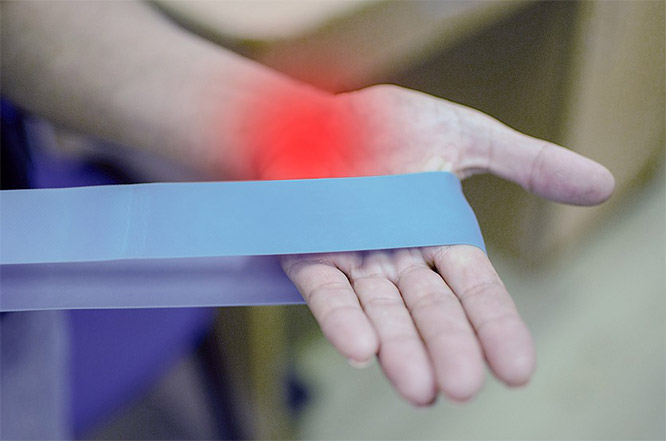
If you have arthritis, you know how painful it can be. Some days, it feels as though you can barely stand up without getting a shooting pain through your hip or having your knees give way.
When you visit your GP, they’ll often prescribe you painkillers and tell you to get plenty of exercise.
Painkillers aren’t a viable long-term solution, especially since arthritis is a degenerative and incurable condition. While a specialist knee consultant can recommend a knee replacement, this medical procedure likely won’t be available to you until later in life, as it’s an invasive surgery with a long recovery period, and replacement joints aren’t designed to last forever.
That brings us back to exercise. You’d be forgiven for thinking, “How am I supposed to exercise when I’m in this much pain?” but studies show it’s an effective treatment for managing painful arthritic symptoms and slowing the progression of the disease.
Then, there are the other benefits of exercise, including maintaining a healthy weight, improving your mental wellbeing by releasing feel-good endorphins, and boosting your immune system.
The key is to take it easy and find what works for you.
What Exercise for Arthritis Isn’t
First, let’s cover what exercising with arthritis doesn’t look like. While thinking of exercise can conjure images of sweating buckets, slogging it out at a gym for hours on end and investing in costly equipment, your exercise routine doesn’t have to look like any of those things.
What to Do Instead
The best exercises for arthritis are low-impact, which means they don’t put a lot of weight and strain on your joints. If you have shoulder arthritis, for example, lifting weights will likely cause you more pain. On the other hand, using a stationary exercise bike or going for a ride along the park can be effective, providing you have the handlebars at an appropriate height and maintain the correct posture to avoid rolling your shoulders forward.
For someone with arthritic knees, though, a bicycle ride may do more harm than good.
But the truth is, you don’t need gym equipment to experience the benefits of exercise.
Yoga
Yoga is all about improving your flexibility and muscle strength. This makes it the perfect exercise for people with arthritis, which makes your joints stiff and tense.
When your arthritis is causing you pain, you also might instinctively adapt the way you move. For example, if you feel a sharp pain in your knees when getting up off a chair, you might ready yourself by hunching forward, which can play havoc with your posture and force you to put more weight on your knees as you stand.
As yoga can help correct your posture, it can help ease your symptoms.
You might think of yoga as out of the realm of possibility — there’s no way you can get into complex poses, and you certainly won’t be doing handstands if you have achy shoulders. But even the simplest of poses can strengthen your core and muscles, and many can be easily adapted to suit you. If you struggle to get on the floor (and back up again!), you might find chair yoga easier.
Yoga classes are all the rage at the moment — whether in-person or online — and you might benefit from working with an instructor to ensure your form is correct. However, if you’re low on budget, you don’t need to miss out. Many instructors provide free tutorials you can follow along with at home.
Swimming
When you have arthritis, doing traditional exercises or playing sports can be difficult. Swimming is an excellent alternative because the warmth of the water eases any aches and pains, and the buoyancy supports your body, preventing you from putting excess weight on your joints.
Dancing
Dance is an increasingly popular form of exercise because it’s a great way to get your heart pumping, but you don’t have to go all-out breakdancing or have lofty ambitions of becoming Strictly-worthy to benefit.
Try out a ballroom or salsa dance class with a friend or simply close the curtains, turn up your favourite upbeat music and jump around your living room. Dancing is a fantastic way of getting in exercise without even realising it — and without stressing out your joints too.
Gardening
Gardening is a rewarding pastime many of us enjoy. It’s also a great way to get a healthy dose of vitamin D and an excellent form of exercise. Whether you’re getting some cardio in as you walk around your garden or cut the grass, or do a bit of light weightlifting as you carry potted plants to their new spot, it’s something you can do even if you have severe arthritis.
You can easily modify most tasks to make gardening easier when your joints ache. For example, you can use hand supports if you struggle with your grip, treat yourself to tools with extendable handles so that you don’t have to bend down to reach your flower beds, and tend to your weeds from a seated position instead of putting weight on your knees.
There’s a reason exercise is the most common prescription for people with arthritis — and that’s because it works! But it’s only effective if you do it safely and consistently. This means taking it slow, listening to your body and, most importantly, finding something you can enjoy — not something that feels like a slog and has you giving up before it has the chance to work.
Author bio
Hannah Whitehouse is a copywriter for St John & St Elizabeth Hospital, a private hospital in London, and has over six years of experience in digital marketing, writing primarily about healthcare and the law. Her interests include health and wellness, sport and personal development.



